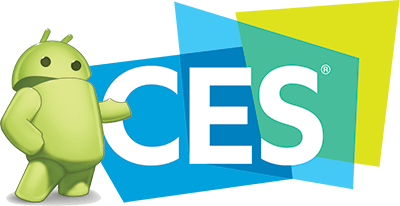

In retrospect, we knew this was coming. Galaxies, as anyone’s listened to Neil deGrasse Tyson for more than 20 minutes should know, grow over time. (Yes, they eventually shrink, too, but that’s another editorial for another time.) And we can mark CES 2016 as the event at which we saw the Samsung Galaxy hit rapid acceleration.
In other words, no longer does “Galaxy” mean Android.
No, the Samsung Galaxy has begun to engulf other nearby systems. Namely, Tizen, Windows and — by the by — Apple’s iOS.
It’s been a long time since the mobile space saw Samsung’s name alongside Apple’s on anything other than a lawsuit.
Samsung Gear S2
- In-depth Samsung Gear S2 review
- Full Gear S2 specs
- Here are the phones that work with Gear S2
- Gear S2 vs. Apple Watch
- Join the discussion in our forums!
Samsung
Amazon
AT&T
Verizon
Best Buy
The news was swift, but sure. Later this year (on January 5, everything is later this year, though), the Samsung Gear S2 smartwatch will work with iOS. That shouldn’t be completely unexpected. Android Wear has worked on iOS for for some time, and presumably the Gear S2, which runs Tizen — technically not part of the “Galaxy” line when announced — will do so with the same sort of limitations. Samsung’s SideSync feature has made its way to Mac as well.
The implication is clear. Samsung’s name — its previously Android-only “Galaxy” brand, its products — is now side-by-side with Apple’s. That’s quite the change from the past several years, when Samsung and Apple seemed only mentioned in the same breath when it came to clickbait headlines — or patent lawsuits.
But there are those of us who have always believed that the companies should have been developing for each other’s platforms from Day 1. What better way than to flick the ear of your competitor than to set up shop in their home? The iOS support was eventual, and long overdue.
Welcome back, Windows.
Then there’s Microsoft. Tablets — large ones, in particular — are still very much thought of as niche mobile devices — with the iPad as the sole exception, maybe. And Samsung and Microsoft haven’t been on the best of terms when it comes to mobile, with the early batch of Windows Phones from what feels like years ago being all we really saw from that partnership. But Windows 10 changes a lot of things. (As did Surface.) It’s as natural on a Samsung laptop as it is on on, say, something from Lenovo. And with other mobile manufacturers starting to put Windows 10 on tablets, it’s a natural fit for Samsung as well. Especially when it comes to making something as large as the new Galaxy TabPro S.

And could you think of any company you’d rather have make a Windows tablet? Samsung has the hardware chops. Microsoft has the hot new operating system. It just makes sense. And what’s the brand again? It’s a Galaxy, the name previously reserved for Android devices.
Brands are brands, and we know companies can (and do) change them at will — the bigger implication is what it means for Samsung as a whole. It’s all about the ecosystem now. It’s all about the gravitational pull of Samsung now, and the vastness of the Galaxy. It’s larger than any one device, or any one family of devices. It’s now larger than phones. Larger than tablets. And while Android isn’t going anywhere anytime soon, it’s starting to look like it might just be one more system in that Samsung Galaxy.
And now the Galaxy once again includes Windows on a mobile device. And software for the Mac. And at some point this year it’ll include wearables for the iPhone. The Galaxy is growing. And good luck to anyone who tries to escape that orbit.